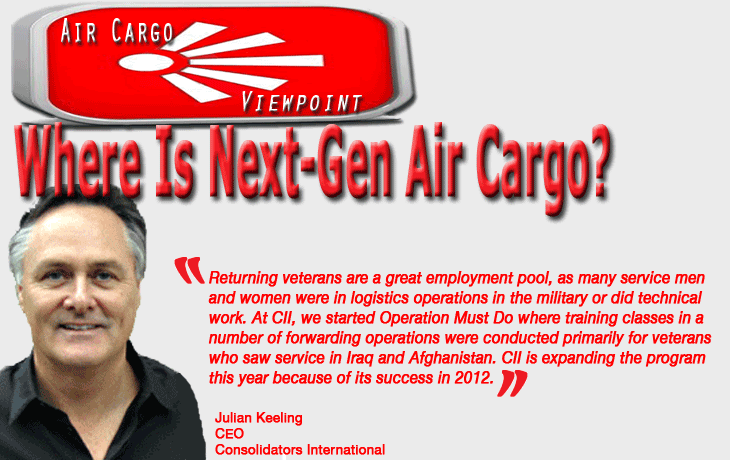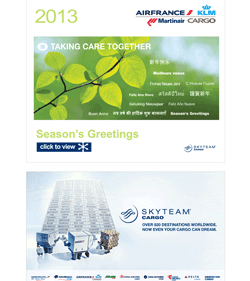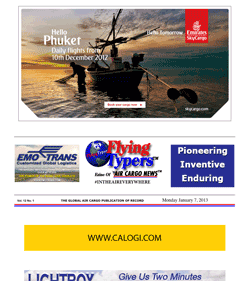|
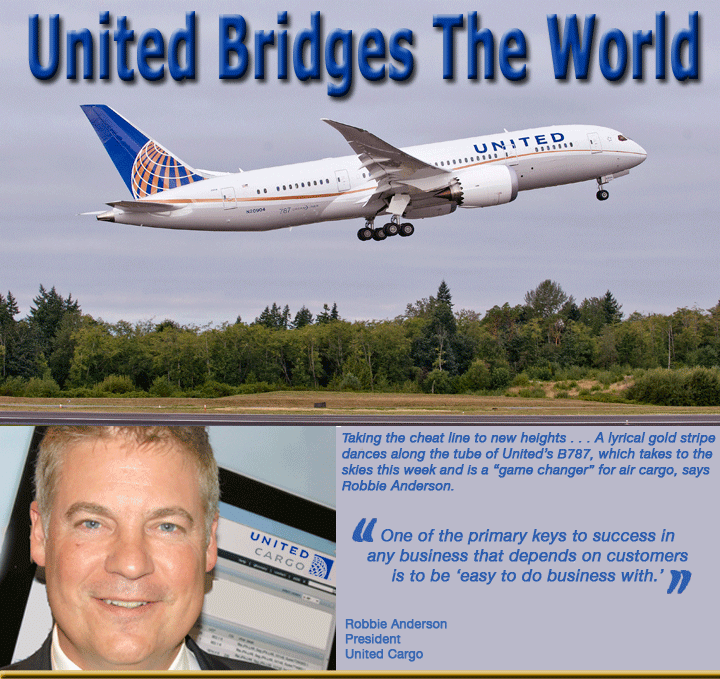
 obbie
Anderson,
who accepted
the reigns
of top executive
at United
Cargo just
two and a
half years
ago, may have
been hard
at work in
a tough climate
during 2012,
building business
while combining
two large
and assertive
air cargo
enterprises
(Continental
and United)
into one,
but now he
has fixed
his gaze on
moving smartly
in 2013 and
delivering
what he envisions
as a top global
resource. obbie
Anderson,
who accepted
the reigns
of top executive
at United
Cargo just
two and a
half years
ago, may have
been hard
at work in
a tough climate
during 2012,
building business
while combining
two large
and assertive
air cargo
enterprises
(Continental
and United)
into one,
but now he
has fixed
his gaze on
moving smartly
in 2013 and
delivering
what he envisions
as a top global
resource.
But
as the following
frank and
no-holds barred
conversation
unfolds, Robbie
also emerges
as a new century
leader with
a vision and
dream for
United Cargo
and the industry
as well.
Everyone
wants to know
if United
& Continental
are one airline,
as 2013 and
our story
begins . .
.
“From
the broader
airline perspective,
United made
great progress
in turning
‘The
World’s
Leading Airline’
from a phrase
into a reality
in 2012.
“We
converted
to a single
passenger
service system,
a single website,
and a single
loyalty program
in the largest
technology
conversion
in airline
history.
“The
conversion
wasn't perfect,
but it was
successful.
“Subsequent
resourceful
developments
made the technology
much more
effective
for United
co-workers.
“We
continued
to develop
our ‘Working
Together’
philosophy
and achieved
our first
joint collective
bargaining
agreement
with our pilots.
“The
most notable
‘good
news’
at United
Cargo was
the transition
of all our
customer accounts
and cargo
capacity onto
the legacy
United system,
effective
December 1.
“One
of the primary
keys to success
in any business
that depends
on customers
is to be ‘easy
to do business
with.’
“While
United Cargo
operated on
two separate
systems with
two different
air waybills,
we were not
as easy to
do business
with as we
wanted to
be.
“That’s
why we’re
very excited
that United
is now truly
‘one
airline’
for cargo—with
one system
for booking
and tracking,
one (016)
air waybill,
and fully
integrated
products,
policies,
and rates.
“We’re
confident
this sets
the table
for our greater
success in
2013.
“There
was one conspicuous
mishap in
2012. On December
1, the same
day we integrated
our cargo
technology
and capacity,
we transitioned
terminal handling
in our IAH
cargo warehouse
to a new vendor.
“While
the system
transition
worked very
well, the
vendor transition
in IAH was
not as successful
as we anticipated
or planned
for.
“The
quality of
service in
IAH fell below
United Cargo’s
standards
in the days
immediately
following
the cutover.
“Additional
expert support,
training,
and manpower
were deployed,
and we have
resolved the
immediate
issues and
improved service
levels in
IAH.
“These
resources
remain in
IAH to ensure
we reach and
maintain the
levels of
service excellence
our customers
expect and
deserve.”

“While
United Cargo
enjoyed many
exciting internal
developments—in
the areas
of integration,
network development,
fleet expansion,
etc.—we
were hampered
by the lack
of consistent
or robust
growth in
the global
economy.
“It’s
a familiar
and frustrating
refrain: there
continued
to be significant
over-capacity
in the worldwide
cargo market,
and this negatively
impacted both
volumes and
yields.
“Even
as we reduced
our capacity
slightly,
United continued
to open up
new markets
in response
to the demands
of passengers
and cargo
customers.
“New
service to
Lagos, Buenos
Aires, Doha,
and Istanbul
all had strong
openings from
a cargo perspective,
and we’re
very excited
about the
opportunities
for continuing
development
in these markets.”
But
of all that
confronted
United Cargo
in 2012, the
most satisfying
was the integration
of all customer
accounts and
cargo capacity
onto the legacy
United system,
effective
December 1.
“This
success was
particularly
gratifying
because it
represented
the culmination
of a tremendous
amount of
hard work
from innumerable
people at
United and
our vendor
partners.
“Concurrent
with the systems
transition,
we integrated
our product
line, website,
claims processes,
Customer Service
Center processes,
and several
additional
policies and
operations.
“A
project of
this magnitude
cannot succeed
without outstanding
dedication
and extra
effort from
everyone involved,
and I’m
very grateful
to everyone
who worked
together to
make it happen.”

“For
United, 2012
also welcomed
a new state-of-the-art
250,000-square-foot
freight facility
at O’Hare
Airport in
Chicago (ORD).
“In
fact the ‘ORD
Opus’
is the first
facility built
specifically
for the combined
cargo operations
of the merged
United, and
serves as
the model
for our ‘green
warehouse
of the future.’
Environmental
principles
were paramount
in the design
and execution
of this facility,
and we’re
very proud
that the operation
promotes both
the future
of United
Cargo and
the future
of the planet.
Feedback from
customers,
co-workers
and vendor
staff in ORD
has been overwhelmingly
positive.”

“The
Eurozone financial
crisis had
a dampening
effect on
transatlantic
demand—leading
to ongoing
weakness in
these markets.
“This
is a significant
issue for
United as
Europe is
an important
region for
us and we
have a strong
presence there.
“We
have seen
a shift to
sea freight
in Japan.
The Japan-to-U.S.
market is
weaker; the
U.S.-to-Japan
market is
also lower
year-over-year.
“However,
we continue
to see strong
demand to
the Latin
Region from
all over the
globe—into
Brazil and
Argentina,
to cite two
examples.
“United
is well-positioned
with our hub
structure
and our lift
to take advantage
of this growing
market.”

“We
follow several
different
industry forecasts
and while
there is no
clear consensus,
we concur
with the IATA
industry forecast
issued in
early December
that predicts
international
freight volumes
will grow
at a compound
annual growth
rate of 3.0
percent per
year through
2016.
“We’ve
noted estimates
from 1-2 percent
market growth
to 1-2 percent
contraction,
but there
are so many
variables
that quoting
specific percentages
for growth
or contraction
in 2013 amounts
to an educated
guess.
“Several
reasons exist
for a sense
of ‘cautious
optimism.’
“The
airline industry
in general,
and the cargo
industry in
particular,
has become
much more
efficient.
“Therefore,
we can often
maintain profitability
despite higher
fuel prices.
“Also,
the latest
reports show
U.S. consumer
confidence
at its highest
level in five
years.
“This
gives us some
hope that
the speed
and efficiency
which are
the hallmark
of air freight
will increase
in value to
shippers and
consumers.
“At
United Cargo,
we’re
confident
that our hub
structure
and network
strength are
a definite
advantage
in any market
situation.
“In
times of uncertain
demand, we
have the opportunity
(and the necessity!)
to maximize
our business
in all our
markets.
“For
example, we
are now focused
on utilizing
connections
to our narrow
body fleet
and our trucking
network to
reach beyond
our gateways
to connect
Asia and Europe
with more
locations
in the U.S.,
Central, and
South America.
“In
periods of
slow or no
growth it’s
important
to focus on
the fundamentals:
staying close
to customers
so we can
understand
and anticipate
their needs,
keeping the
commitments
we make to
our customers,
and understanding
and utilizing
our fleet
and network
advantages.
“We
can’t
control the
size of the
market, so
we need to
exploit our
resources
to capture
market share.
“One
of the most
exciting developments
in 2012 will
be one of
our main difference-makers
in 2013.
“Among
the principal
benefits of
our combined
fleet is the
ability to
put the right
aircraft in
the right
market—re-allocating
our fleet
to match the
aircraft type
to the demand
levels on
each route
we fly.
“Our
ability to
right-size
the aircraft
to the market
will be greatly
enhanced by
the addition
of the Boeing
787 Dreamliners
to our fleet.
“The
B787 is a
game-changer
for United
because it
fills a void
in our widebody
fleet. B787
combines the
longer range
of the 747
and 777 with
the seat configuration
of the 767.
“Factoring
in the lower
operating
cost—the
highly fuel-efficient
787 consumes
20 percent
less fuel
on average
than similarly-sized
planes—United
can now economically
offer direct
widebody service
to a number
of new markets.
“The
787 has the
same cargo
configuration
and accepts
the same containers
and pallets
as our Boeing
777s.
“The
cargo capacity
of the 787
is 25 percent
greater than
the 767, the
same as some
of our current
777s, and
just slightly
less than
our larger
777s.
“Also,
the overhead
storage bins
on the 787
hold 30 percent
more than
the bins on
comparable
aircraft,
and they’re
designed specifically
for the roll-aboard
bags used
by many passengers.
“This
keeps these
bags out of
the cargo
pit and enables
us to carry
much more
cargo on every
flight.
“United
took delivery
of our sixth
787-8 recently
and initiated
Los Angeles-Tokyo
Narita service
on January
3.
“LAX-NRT
is United’s
first scheduled
international
route flown
by the Dreamliner.
Additional
routes to
be serviced
by 787s in
the first
quarter include
Houston-Lagos
beginning
later in January;
Houston-Amsterdam
in February;
and Houston-London,
Los Angeles-Shanghai,
and Denver-Narita
beginning
in March.”
Geoffrey/Flossie
 
 When
we consider
what
everyone
in air
cargo
must
address
in order
to build
business,
a number
of agreements
were
among
the
bright
spots
in 2012;
they
demonstrated
a spirit
of collaboration
between
governments
and
the
cargo
industry
on various
regulatory
issues. When
we consider
what
everyone
in air
cargo
must
address
in order
to build
business,
a number
of agreements
were
among
the
bright
spots
in 2012;
they
demonstrated
a spirit
of collaboration
between
governments
and
the
cargo
industry
on various
regulatory
issues.
Solid
progress
was
made
toward
determining
the
best
practices
for
advance
data
submission
and
risk
assessment
for
the
Air
Cargo
Advance
Screening
(ACAS)
pilot
program.
Another
of this
year’s
highlights
in this
area
is the
agreement
between
the
European
Commission
and
the
U.S.
TSA
to recognize
each
other’s
air
cargo
security
programs.
The
benefits
of cooperation
were
also
shown
when
the
European
Union
suspended
the
inclusion
of international
aviation
in the
EU Emissions
Trading
Scheme.
All
these
outcomes
demonstrate
how
vital
it is
that
our
industry
speaks
with
a unified
voice,
in cooperation
with
governments
and
regulatory
bodies.
The
challenge
for
2013
is to
bring
this
forward-thinking
focus
on practical
decisions
to bear
on the
industry’s
other
issues—specifically
in the
area
of e-commerce.
While
the
fundamentals
behind
e-freight
haven’t
changed,
what
has
evolved
is the
number
of very
good
reasons
our
industry
needs
to embrace
paperless
transport
sooner
rather
than
later.
We
now
have
reasons
beyond
the
financial
benefits.
Universal,
standard,
consistent,
quality
messaging
is key
to the
risk-based
threat
assessment
that
is the
vital
next
step
in cargo
security.
 Risk
assessments
based
on paperless
data
are
the
best
way
to improve
security
without
impeding
the
flow
of commerce.
Risk
assessments
based
on paperless
data
are
the
best
way
to improve
security
without
impeding
the
flow
of commerce.
|
|
|

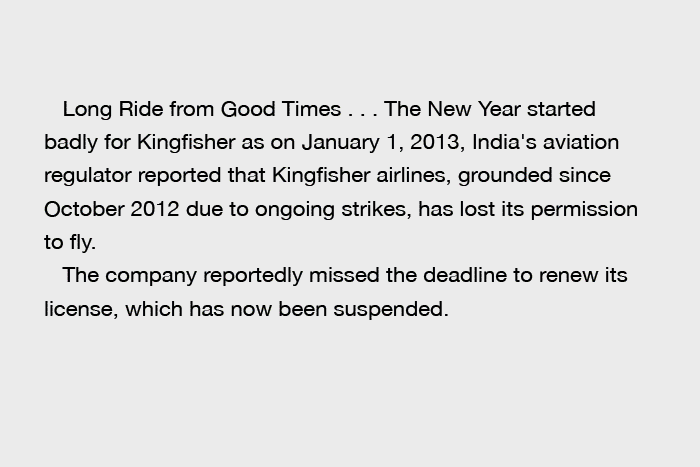




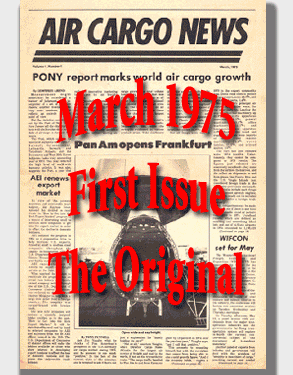


 obbie
Anderson,
who accepted
the reigns
of top executive
at United
Cargo just
two and a
half years
ago, may have
been hard
at work in
a tough climate
during 2012,
building business
while combining
two large
and assertive
air cargo
enterprises
(Continental
and United)
into one,
but now he
has fixed
his gaze on
moving smartly
in 2013 and
delivering
what he envisions
as a top global
resource.
obbie
Anderson,
who accepted
the reigns
of top executive
at United
Cargo just
two and a
half years
ago, may have
been hard
at work in
a tough climate
during 2012,
building business
while combining
two large
and assertive
air cargo
enterprises
(Continental
and United)
into one,
but now he
has fixed
his gaze on
moving smartly
in 2013 and
delivering
what he envisions
as a top global
resource.


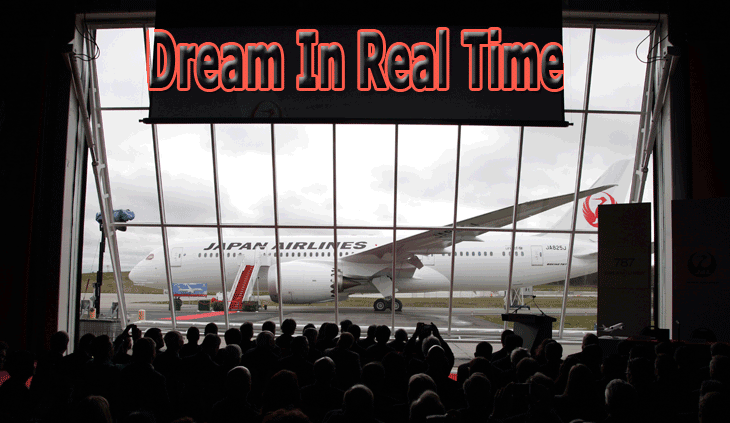 Some
falling debris,
engine leaks,
even an exploding
battery, plus,
as we go to
press today,
a brake issue
aboard an
ANA B787—these
are all the
problems that
have brought
attention
to Boeing’s
glamorous
new Dreamliner.
Some
falling debris,
engine leaks,
even an exploding
battery, plus,
as we go to
press today,
a brake issue
aboard an
ANA B787—these
are all the
problems that
have brought
attention
to Boeing’s
glamorous
new Dreamliner. FlyingTypers
learned on Monday
that United Airlines
Cargo named Jim
Bellinder as Vice
President, Sales,
with responsibility
for all United Cargo
Sales worldwide.
FlyingTypers
learned on Monday
that United Airlines
Cargo named Jim
Bellinder as Vice
President, Sales,
with responsibility
for all United Cargo
Sales worldwide.


 While cost savings
were seen as the
main benefit, there
were a number of
secondary reasons
in the different
regions. In Southeast
Asia, rising wages
in traditional sourcing
markets, such as
China and India,
make manufacturing
closer to home more
attractive. African
companies see benefits
in reducing their
cash flow and currency
risks, as well as
avoiding protectionist
policies of their
trading partners.
In Eastern Europe
and Turkey, companies
are benefiting from
the rise of more
middle-class consumers,
while in India the
problems of regulatory
compliance are making
companies focus
more closely on
their domestic market.
While cost savings
were seen as the
main benefit, there
were a number of
secondary reasons
in the different
regions. In Southeast
Asia, rising wages
in traditional sourcing
markets, such as
China and India,
make manufacturing
closer to home more
attractive. African
companies see benefits
in reducing their
cash flow and currency
risks, as well as
avoiding protectionist
policies of their
trading partners.
In Eastern Europe
and Turkey, companies
are benefiting from
the rise of more
middle-class consumers,
while in India the
problems of regulatory
compliance are making
companies focus
more closely on
their domestic market.
